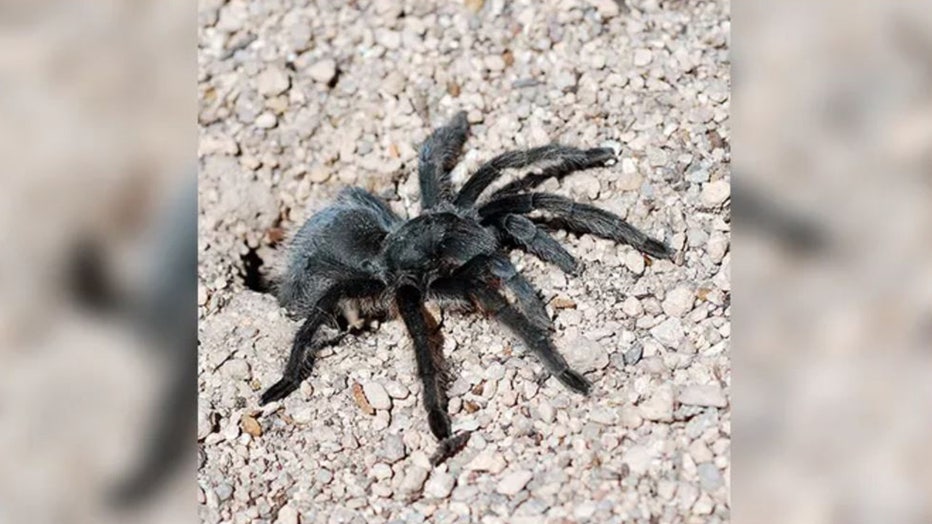Tarantula mating season begins as males are led to their death
Just in time for Halloween: Tarantulas on the march
The annual migration happens just before Halloween, from late September through early October in the Southwest.
In the Southwest, the cooler temperatures of fall cue the most romantic – and deadly – time of year for many tarantulas as they try to find an autumn valentine.
Tarantulas typically remain in the burrows throughout most of the year, and only come out at night, according to the National Park Service. But come mating season, adult male tarantulas throw caution to the wind for the sake of finding a female.
The annual migration happens just before Halloween, from late September through early October in the Southwest.
Males between 8-10 years of age may venture out of their burrows and wander the vast expanse of their usually hot desert home to find a mate in the crisp fall environment. According to the NPS, tarantulas may walk long distances to accomplish this.

FILE - A male tarantula crosses Colorado Highway 71 as dusk approaches on Sept. 24, 2022 near Lamar, Colorado. (Helen H. Richardson/MediaNews Group/The Denver Post via Getty Images)
Such an expedition can be dangerous as males scurrying above ground become exposed to predators, vehicles and humans.
A male tries to find a receptive female tarantula by tracking the scent of a female to her burrow, the NPS said. To let the female know that he is outside of her burrow, he taps one of his legs on the ground until she emerges.
JUST IN TIME FOR HALLOWEEN: TARANTULAS ON THE MARCH
Once she does, the two engage in a mating dance that, for the male, can mean his end. As they mate, the male fends off the female with his front legs as she wants to eat him. The NPS noted that, by consuming the male, the female is able to receive extra nutrition as she will produce up to 1,000 eggs and a silk cocoon she’ll weave to protect them.
If a male is able to escape a female’s grasp and appetite, he will still likely die within a few months, according to the NPS. The female, on the other hand, may live and produce more eggs for at least 25 years.

Female tarantula at a burrow. (Bandalier National Monument / FOX Weather)
Tarantulas can be found around the world, with about 30 tarantula species native to the U.S. Most of those species can be found in Arizona, New Mexico, Texas and Oklahoma, while others can also be found in states such as California and Colorado.
In some areas of the country, this mating event can become a spectacle. In fact, the town of La Junta in southeastern Colorado hosts a festival in honor of the male tarantulas scurrying across the landscape to find a mate.
NOT FROM A HORROR FILM: WHEN INSECTS TURN INTO ‘ZOMBIES’
This diversity in geography means that the timing of mating season may vary, depending on the weather conditions experienced on the local level.

A woman takes a photo of a tarantula. (Joshua Tree National Park / FOX Weather)
"Mating season is determined by temperature and microclimates," said Andrine Shufran, Oklahoma State University Extension specialist and director of OSU’s Insect Adventure.
For many areas in the desert Southwest, fall is the season for tarantula-loving.
"Autumn provides a brief glimpse into the workings of nature in the desert," the Joshua Tree NPS said, where tarantulas are on the move each fall to find a mate. "At no other time is the intimate connection between life and death represented so clearly."

